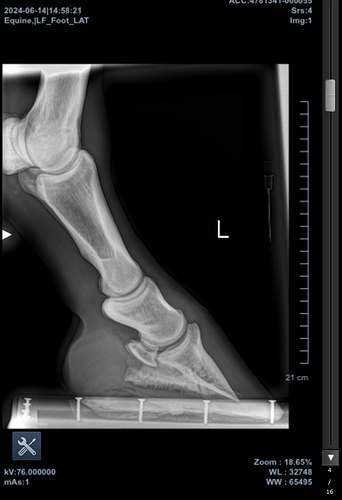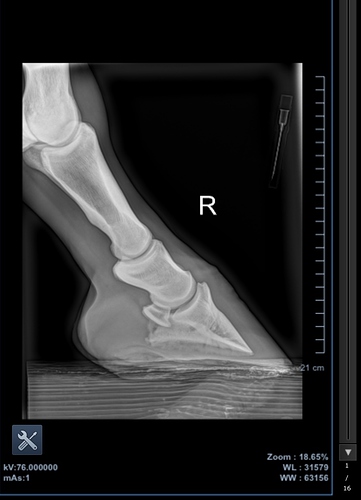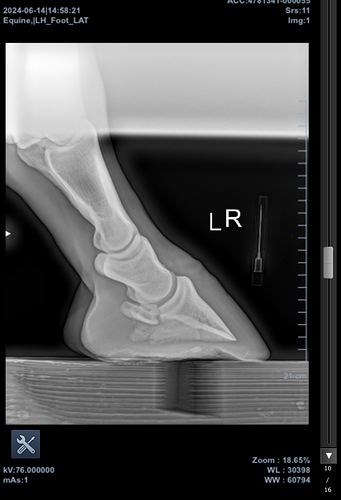I had my mares feet xrayed this week when the vet came to do a lameness exam. We also found a significant stifle injury but I am unsure of the prognosis and treatment options right now. I’m focusing on her feet while I wait for the vet to consult.
These are her front feet xrays, the vet just said to have my farrier look at them, but that they could be rotation or could just be thin soles? Farrier is out next week, but I’m wondering if this is a sign to find a new one or figure out how take her to the big clinic that I think has a podiatrist.
Two images of the left and one of the right front.
I have her in front boots and just ordered some of the easycare soft pads.





